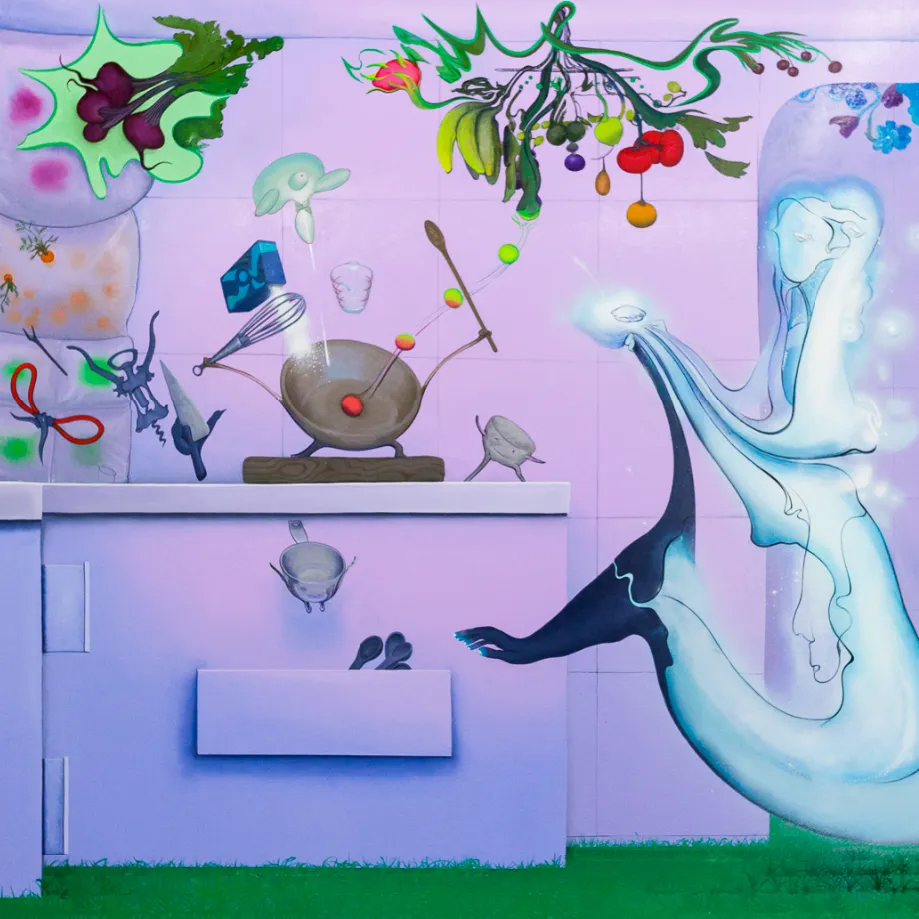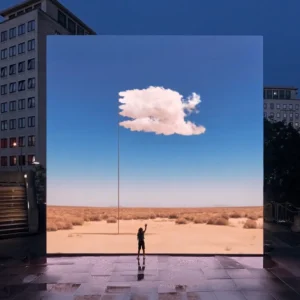Surrealism, which spread its roots a century ago, proves to be a great force in the art world up to this day. Contemporary Surrealist artists continue to be inspired by their predecessors, and the movement is ever reviving and still captivating the art world.
The Art Historical Context
Dada, originated in 1916 in response to World War I, challenged cultural, political, and economic conventions and argued that anybody could be an artist and that everything might be art.
By the early 1920s, many Dadaists had moved to Paris, where Breton became a major figure.
He wanted more guidance even though he admired Dada’s rebelliousness. Motivated by the psychoanalytic theories of Sigmund Freud, he wanted to establish a more organized movement. He declared Dada’s end in 1924, calling its “funeral” “unnoticed,” and introduced in Surrealism.
Breton’s Surrealist Manifesto, written in 1924, marked the formal beginning of surrealism and described it as “pure psychic automatism” that freely articulated thinking.
Key Concepts of Surrealism
Surrealist thinkers including surrealist painters believed art could unlock deeper layers of the human psyche. Employing techniques like automatism, a technique where artists and writers suppress conscious control to allow their subconscious to guide the creation process, as well as free association, they aimed to bypass conscious control, fostering a flow of imagination uninhibited by reason.
Other methods employed by Surrealist painters to explore the subconscious include the depiction of dreamscapes, inspired by Freud’s theories of dreams, and techniques such as collage, frottage—French word for rubbing, a technique developed by Max Ernst—, and cadavre exquis—collaborative drawing approach to create bizarre and intuitive drawings—, where collaboration and chance play a significant role.
Surrealist painters also drew inspiration from mysticism, ancient cultures, and Indigenous art, using these influences to imagine alternative realities that challenged conventional perceptions of life and art.
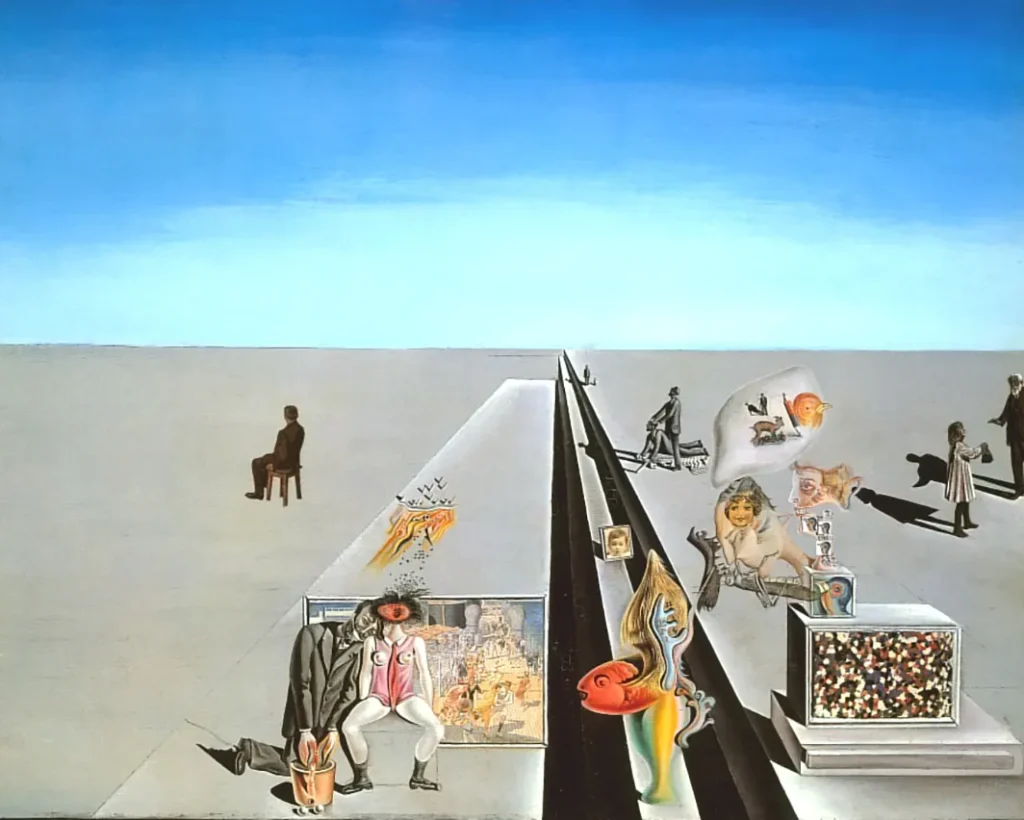
Key Surrealist Painters and Their Contributions
André Breton
The movement’s creator and main theorist was Breton, who has been referred to as the “father of surrealism.” By uniting poets and artists through his influence and works, he established Surrealism as a philosophical and cultural movement. He was crucial in establishing the movement’s emphasis on analyzing the subconscious, a topic influenced by Sigmund Freud’s works on psychoanalysis and dreams.
Salvador Dalí
Salvador Dalí’s surrealist works rose to prominence as movement icons. The Persistence of Memory (1931), his masterwork, has received recognition for its potent examination of memory and time, featuring melting clocks.
Introducing the paranoiac-critical method, Dalí demonstrated that subconscious visions can be accessed through paranoid interpretations. He not only contributed to painting, but also cooperated with filmmakers to expand the movements reach. One of his famous films An Andalusian Dog (1929) was a collaboration with Luis Buñuel.
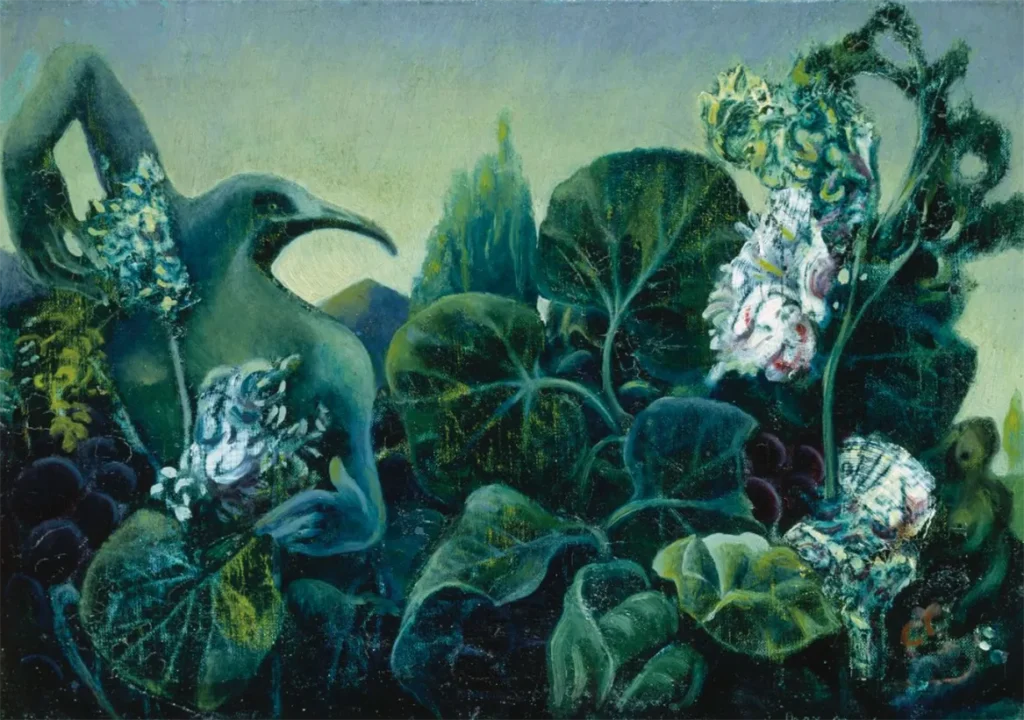
Max Ernst
Max Ernst, an important figure in the shift from Dada to Surrealism, invented methods such as decalcomania (pressing paint between surfaces) and frottage (rubbing textures into paper). Ernst’s employment of these methods to produce post-apocalyptic landscapes is evident in pieces such as Europe After the Rain II (1940–42). Sigmund Freud’s painting Men Shall Know Nothing of This (1923), which linked surrealism with psychological research, was greatly influenced by his examination of Daniel Paul Schreber’s memoirs.
René Magritte
René Magritte is known for applying precise realism along with disconcerting juxta positioning. The famous phrase “Ceci n’est pas une pipe” (“This is not a pipe”) appears below a painted pipe in The Treachery of Images (1929), highlighting the distinction between objects and their representations. His focus on the eye, as depicted in The False Mirror (1929), echoed the Surrealist painters’ belief in the eye as a bridge between the inner self and the external world, giving his paintings a surreal yet deeply meaningful quality.
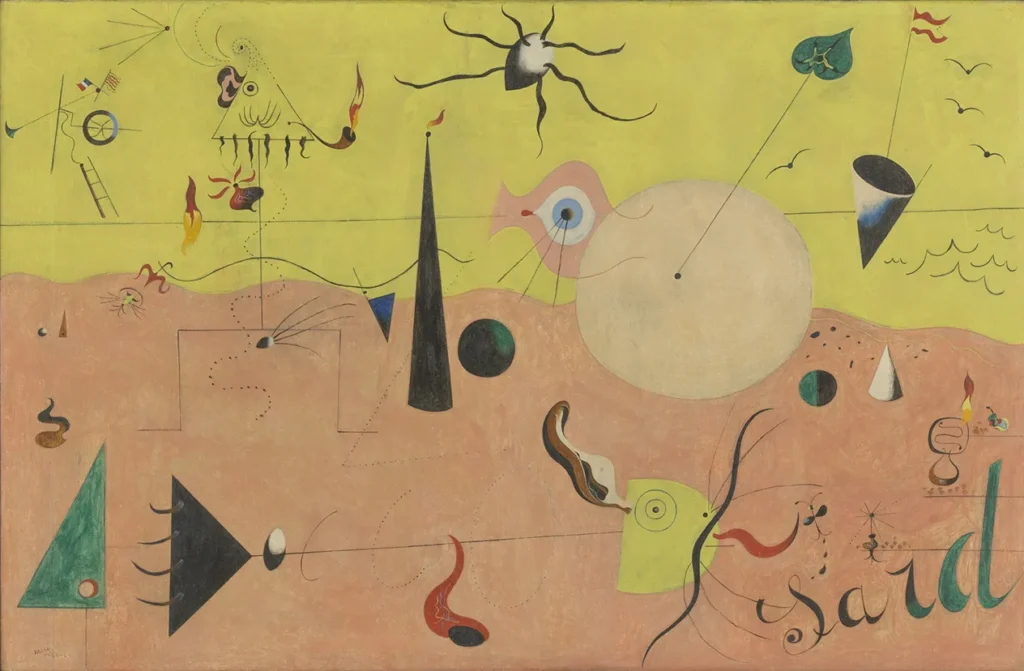
Joan Miró
Miró combined abstract painting and surrealism to produce vibrant symbolic pieces that drew inspiration from his Catalan background. His Hunter (Catalan Landscape) (1923–24), which blends abstract and figurative elements, shows his creative method of expressing the subconscious. The movement’s goals of spontaneity and intentionality in expressing the inner thought were ideally aligned with his art technique, which started with an unrestrained, unconscious phase and ended with meticulous planning.
Collective Impact
While Dalí and Ernst explored subconscious landscapes, Magritte manipulated visual perception and Miró fused abstraction with Surrealist principles. Together, they expanded the boundaries of art, creating a legacy that continues to inspire.
Surrealism As “A Way of Life”
Beyond its artistic contributions, Surrealism was, as critic Patrick Waldberg put it, “a way of thinking, a way of life.” It rejected societal norms and rational constraints, encouraging individuals to embrace creativity and pursue personal freedom.
Surrealism influences viewers deeply by prompting them to question their understanding of reality and encouraging exploration of their subconscious. The unusual contrasts, dreamlike visuals, and symbolic features compel audiences to reflect on the limits that separate imagination from reality.
Surrealism’s capacity to bridge the subconscious and the tangible makes it not just an artistic style but a timeless and transformative force in shaping how we understand ourselves and the world.
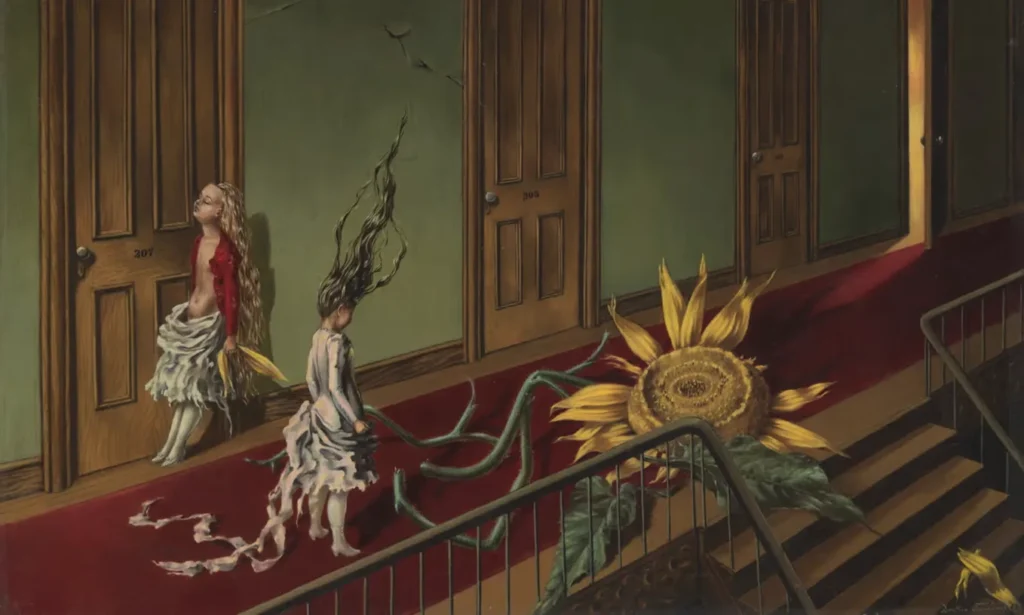
In the broader art world, Surrealism’s influence has extended far beyond painting. In literature, it revolutionized poetic and narrative structures, with figures like André Breton, Paul Éluard, and Robert Desnos using language to access and express unconscious desires and thoughts.
Surrealist cinema, led by directors like Luis Buñuel with films such as Un Chien Andalou, broke free from linear storytelling to explore dream logic, symbolism, and the irrational. These innovations reshaped narrative arts, inspiring new approaches to storytelling across genres.
Even in popular culture, Surrealist techniques have influenced music videos, advertising, and design, embedding the movement’s aesthetic and philosophical ideas into everyday media.
Contemporary Surrealist Artists’ Contributions and Surrealism in Different Mediums
Because it offers a framework for digging into the subconscious, accepting surprising juxtapositions, and recreating reality, surrealism continues to inspire contemporary surrealist artists today. The contemporary reinterpretation of surrealism reveals the movement’s enduring importance by bridging psychological theories, dreamy aesthetics, and experimental tales.
Julie Curtiss integrates Carl Jung’s concept of archetypes—universal symbols and patterns that shape human understanding—into her art. Her bold, pared-down compositions highlight surreal textures and unexpected body part juxtapositions, challenging perceptions and encouraging introspection.
Through a variety of media, Penny Slinger combines symbolism such as spectral feminine figures, reflected reflections, and bizarre juxtapositions. Her work explores issues of identity and spirituality while emulating Surrealism’s propensity to blur the lines between artistic mediums.
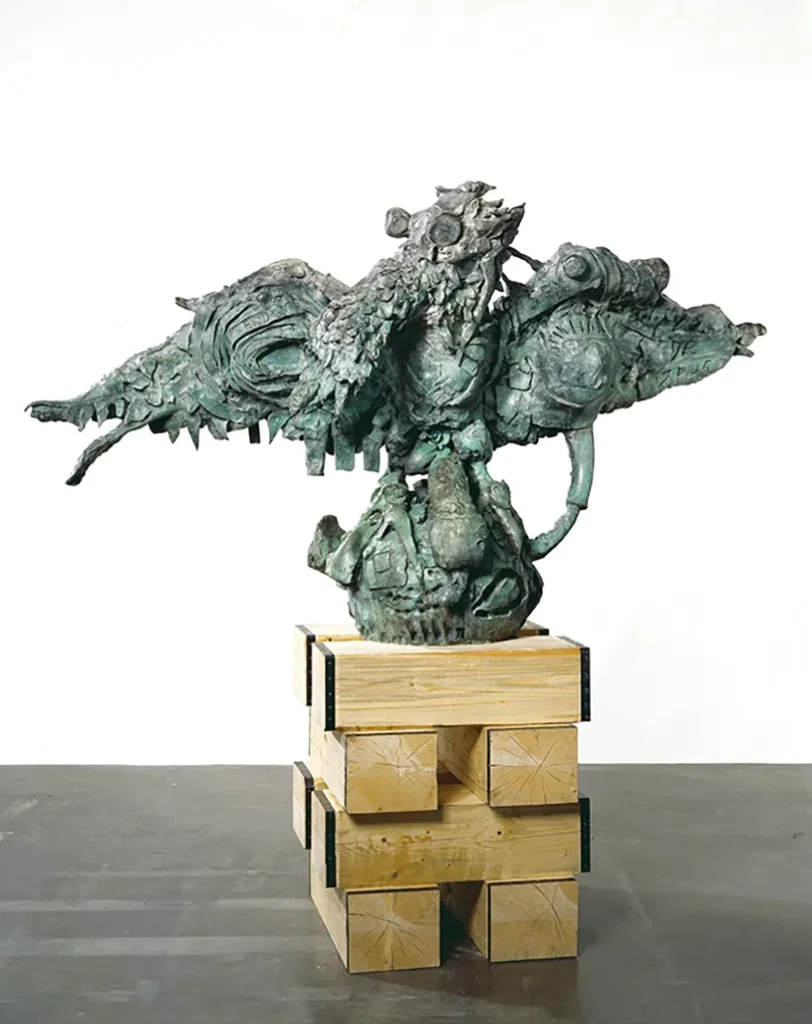
Jonathan Meese channels the anarchic spirit of early Surrealists with his vibrant, chaotic paintings that disrupt reality. His work, like HEY, PASSENGER, PASSIER MIR DIE NILLN’-PASS-AGE (2012), features swirling body parts and exaggerated figures, emphasizing Surrealism’s subversive potential and challenging norms of politics and ideology.
Inka Essenhigh blends whimsical, futuristic themes with the dreamlike fluidity of Surrealism. Her anthropomorphic figures and fantastical scenarios, like in Kitchen 2623 C.E. (2019), evoke subconscious exploration, while her use of automatic drawing reflects Surrealism’s quest to uncover hidden layers of the mind.
Nathaniel Mary Quinn combines portraiture with Surrealism, creating painted photomontages that explore psychological fragmentation. His layered compositions of faces and body parts tap into the unconscious mind, reflecting the Surrealists’ focus on psychological depth and abstraction.
Contemporary surrealist artists continue to draw on Surrealism to navigate contemporary issues, keeping its fundamental ideas—subverting conventions, delving into the unconscious, and forging surprising connections—vividly alive.
Top Exhibitions Celebrating Surrealism
Here are highlights of some of the key exhibitions that have commemorated Surrealism’s legacy:
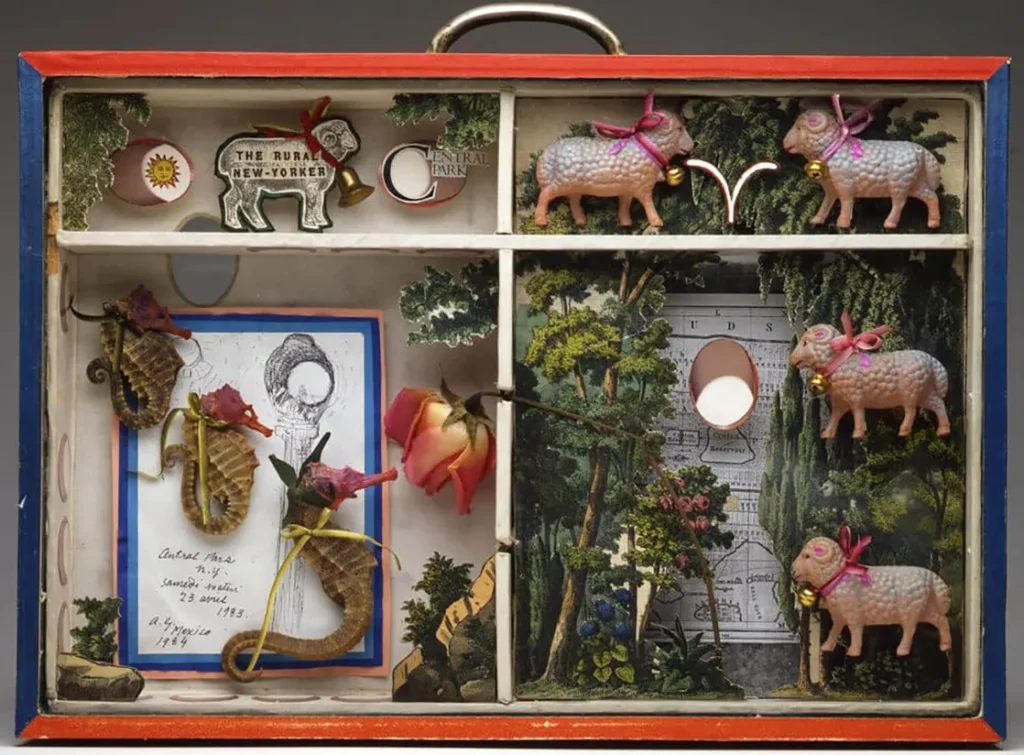
Surréalisme – Paris, France
Surréalisme at the Centre Pompidou brings together paintings, drawings, films, photographs, and literature under 14 sections. Showcasing works by master Surrealist painters, the thematical and chronological sections highlight the literary figures behind the movement and their influence on visual artists.
In order to present works by renowned Surrealist artists, the exhibition combines paintings, drawings, movies, photos, and literary texts. The exhibition, which is arranged both historically and thematically, is broken up into 14 parts that focus on the literary personalities that influenced the movement and the poetical ideas that influenced its iconography.
Surrealismus – Heilbronn, Germany
On through January 2025, the exhibition at Kunsthalle Vogelmann, places contemporary art alongside classic Surrealist pieces. Through the showcase of works by contemporary surrealist artists such as David Lynch, Cindy Sherman, Yves Tanguy and many others, it is evident that the idea and social critique of Surrealism still impacts art today.
But Live Here? No Thanks: Surrealism + Anti-Fascism – Munich, Germany
Surrealism had a political position in history as well. Munich’s Lenbachhaus examines the movement’s anti-fascist beginnings through March 2025, connecting it to other movements such as the civil rights struggle and anti-colonial freedom.
100 Years of Surreal Landscapes – Wakefield, West Yorkshire, United Kingdom
Hepworth Wakefield is hosting an exhibition on Surrealist landscapes through April 2025. Including works by a variety of surrealist painters, the exhibition looks into unusual and nightmarish landscapes that evoke anxiety and exuberate beauty at the same time.
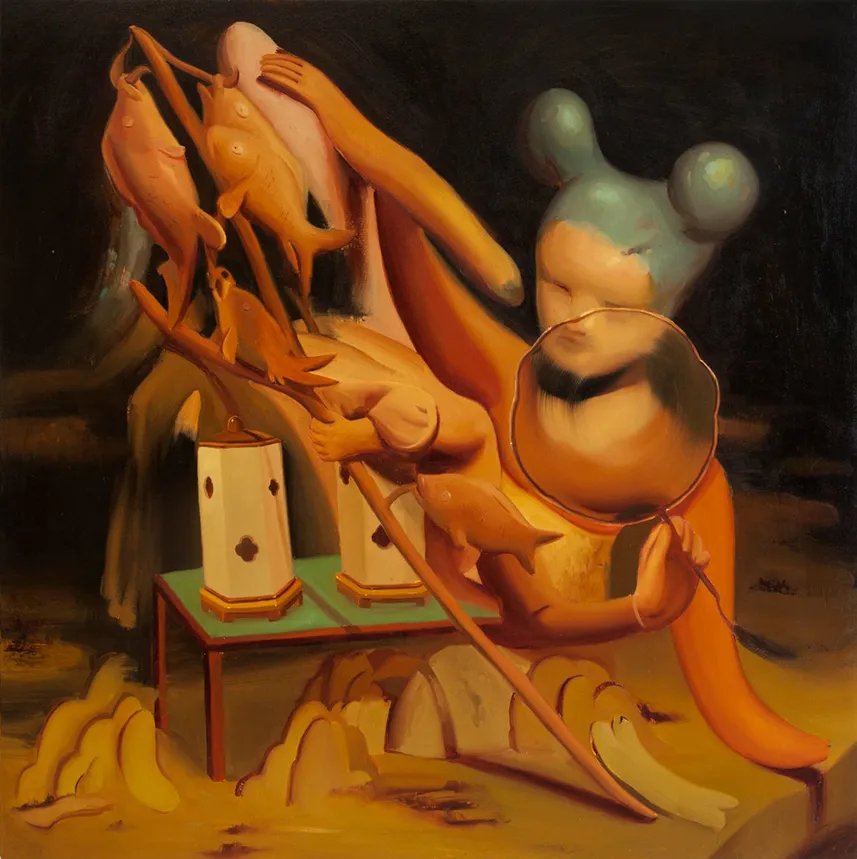
The Legacy of Surrealism
Surrealism continues to influence how contemporary surrealist artists dive into the depths of the human psyche. Its focus on irrationality, the subconscious, and dreams are still extremely relevant within the context of contemporary art.
Through the practices of contemporary surrealist artists, the themes and ideas of surrealism have evolved to new media, from the revival of figurative painting to the digital era, fusing fantasy and reality in ways Breton could never have predicted.

